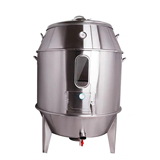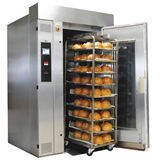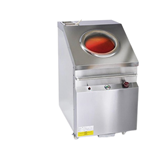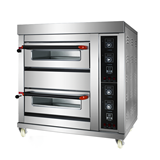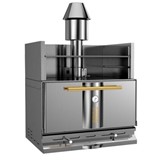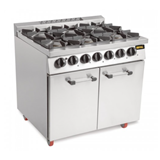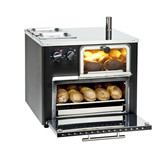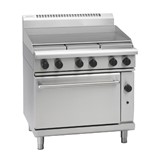Key takeaways
- Combi oven prices in Australia range from $8,000 to over $40,000, depending on size, brand, and features.
- Types include electric, gas, boiler-based, and boilerless combi ovens with tray capacities from 6 to 40 trays.
- Running costs are influenced by water, gas/electricity usage, and cleaning chemicals, with energy-efficient models reducing long-term costs.
- Maintenance costs average $300–$800 annually, depending on usage and servicing frequency.
- Financing options like equipment leasing or hospitality-focused business loans are common in Australia.
- Compliance with Australian Gas Association (AGA) and WaterMark certification is essential.
Introduction
If you're in the hospitality industry, a commercial combi oven can significantly elevate your kitchen's efficiency, versatility, and consistency. Used widely across restaurants, bakeries, hotels, and aged care facilities, these ovens combine convection, steam, and combination cooking into a single powerful appliance. But with a wide price range and many options available, choosing the right one can be a challenge.
This guide will walk you through everything you need to know about buying a commercial combi oven in Australia—from pricing to features, certifications, financing, and more—so you can make a confident investment in your kitchen.
Types of commercial combi ovens
Electric vs. gas combi ovens
- Electric combi ovens: More commonly used, easier to install, and compatible with most commercial kitchens.
- Gas combi ovens: Preferred by some for lower operational costs, but require gas line access and AGA certification.
Boiler vs. boilerless systems
- Boiler systems: Generate steam via a separate boiler; ideal for high-output kitchens.
- Boilerless systems: Generate steam via water injection; lower maintenance and more energy-efficient.
Sizes and tray capacities
- Small units: 6–10 trays; ideal for cafés and boutique restaurants.
- Mid-sized units: 10–20 trays; suited for medium-sized restaurants and hotels.
- Large units: 20–40 trays; for large institutions, hospitals, or catering businesses.
Commercial combi oven prices in Australia
Here’s a price breakdown based on type and size:
- Entry-level combi ovens (6–10 trays): $8,000 – $15,000
- Mid-range units (10–20 trays): $15,000 – $25,000
- High-end/commercial-scale ovens (20–40 trays): $25,000 – $40,000+
Prices also depend on brand, country of origin, automation level, and energy efficiency features.
Operation and key features
Combi ovens allow for:
- Steam cooking: Ideal for vegetables, rice, and seafood.
- Convection cooking: Great for baking, roasting, and grilling.
- Combination mode: For perfect moisture and browning—ideal for meats and bakery items.
Key modern features include:
- Touchscreen controls
- Programmable recipes
- Self-cleaning functions
- HACCP data recording
Maintenance and spare parts
- Regular cleaning: Daily cleaning is essential. Many units have self-cleaning programs.
- Descaling: Especially important in hard water areas.
- Parts replacement: Heating elements, steam generators, and control panels may need replacing over time.
- Annual servicing: Budget around $300–$800/year depending on usage.
Spare parts should be sourced from authorised dealers or the manufacturer.
Financing options in Australia
Australian hospitality businesses often opt for:
- Equipment leasing: Spread the cost over time with monthly payments.
- Chattel mortgage: Own the oven from day one while benefiting from tax deductions.
- Hospitality business loans: Tailored lending options from commercial banks and fintech lenders.
Warranties
- Standard warranties: Typically 1–2 years on parts and labour.
- Extended warranties: Available from some suppliers—always check what’s included.
- Service plans: May be bundled with purchase to reduce downtime.
Compliance and certification
In Australia, buyers must ensure the combi oven meets:
- AGA certification (for gas models): Ensures safety and compliance with Australian standards.
- WaterMark certification: Mandatory for water-using appliances.
- Energy ratings: Higher-rated units reduce running costs.
- HACCP compatibility: For kitchens requiring strict food safety monitoring.
Installation and site requirements
Installing a commercial combi oven isn’t just plug-and-play—especially in hospitality kitchens. Proper installation ensures safety, compliance, and performance from day one.
Key considerations for installation:
- Access and space: Confirm door widths and kitchen layout can accommodate the oven’s size and weight (some units weigh over 150kg).
- Power and utilities: Check if your oven needs 3-phase power, gas, water inlet, or steam exhaust—and ensure connections are compliant with Australian Standards.
- Flooring and ventilation: Non-slip, heat-resistant flooring and adequate overhead clearance are essential. Good ventilation also supports compliance and operator comfort.
- Professional setup: Always use a licensed installer. Many suppliers offer commissioning, which includes calibration and testing after install—factor this into your quote.
Return on investment (ROI) and operational value
A quality combi oven can feel expensive upfront—but the ROI can be significant, particularly in high-volume hospitality kitchens.
Ways a combi oven delivers ROI:
- Faster service times: Speedier cooking means more covers per shift—boosting revenue.
- Labour efficiency: Programmable settings reduce training time and cooking errors.
- Food consistency: Less waste from over/undercooking leads to better margins.
- Energy savings: Efficient models can cut utility costs by 15–30% over older ovens (Australian Energy Regulator data).
- Longevity: Well-maintained combi ovens can last 10–15 years, offering strong long-term value.
Common questions buyers ask
Q: Do I need a hood for a combi oven?
A: In most cases, yes. Local council regulations may require exhaust hoods depending on oven size and location.
Q: What power supply is needed?
A: Most commercial combi ovens need a 3-phase power supply. Always check with your electrician.
Q: Can combi ovens replace other equipment?
A: Yes, many kitchens use them to replace steamers, convection ovens, and grills.
Q: How long do they last?
A: With proper maintenance, a commercial combi oven can last 10–15 years.
Q: Are second-hand combi ovens worth it?
A: Only if serviced properly and sourced from reputable dealers. Always check warranty status.
Conclusion
Investing in a commercial combi oven is a strategic decision that can enhance your kitchen’s capabilities, improve consistency, and cut down prep time. With models ranging from $8,000 to $40,000+, understanding your operation's needs, capacity requirements, and compliance obligations is critical.
Whether you’re upgrading your restaurant kitchen or fitting out a new hospitality venue, this guide gives you the tools and insights to make an informed, confident purchase.





